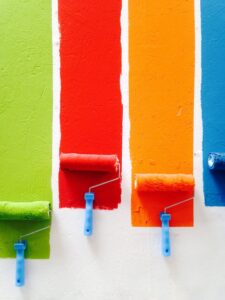 Adjectives, words that describe people, places, things, or ideas, bring life and color to our writing and speech. They describe things so that the reader or listener can get a truer picture of what the author or speaker is talking about.
Adjectives, words that describe people, places, things, or ideas, bring life and color to our writing and speech. They describe things so that the reader or listener can get a truer picture of what the author or speaker is talking about.
Which of these sounds more appealing? A glass of iced tea, or a tall, cool glass of sweet, refreshing, iced tea? Adjectives are essential to good communication.
In English, nouns don’t have gender so the adjective stays the same, no matter what we are describing. It makes no difference whether we are writing about a tall boy or a tall girl; we still use tall. Even when we are describing more than one thing, such as tall boys and tall girls, the adjective doesn’t change.
When it comes to adjectives in French, though, things are more complicated. This is because French nouns have gender. They are considered either masculine or feminine. French adjectives can change their forms depending on whether the nouns they describe are masculine or feminine.
A tall boy is grand.
A tall girl is grande.
Tall boys are grands.
Tall girls are grandes.
Usually the feminine form just adds “e” to the masculine adjective. This can change the pronunciation of the adjective by causing the final consonant to be pronounced.
Eg.: The cat is small.
ms Le chat est petit. (puh-TEE)
The mouse is small.
fs La souris est petite. (puh-TEET)
Also, there are different forms depending on whether the adjective is singular or plural. The plural form usually just adds “s.” This “s” is almost never pronounced.
Eg.: The cats are small.
mp Les chats sont petits. (puh-TEE)
The mice are small.
fp Les souris sont petites. (puh-TEET)
Some adjectives change quite a bit depending on whether they are masculine or feminine. The word for beautiful, for example, is beau (boh) when we are describing a masculine noun, and belle (bell) when we are describing a feminine noun.
The word for old also changes. An old man is vieux (vee-YUH), but an old woman is vieille (vee-YAY).
But, of course, just to make it interesting, some adjectives are exactly the same whether masculine or feminine. The colour words red – rouge (roozh), yellow – jaune (zhohn), and orange – orange (oh-RAHZH) are some examples.
In English, the adjective doesn’t change, but in French it must agree in number (singular or plural) and in gender (masculine or feminine) with the noun that it is describing. Remember this when you are using any French adjective.
 Thanks for visiting! I'm here to help you in your homeschool adventure. Please note that my shopping cart uses cookies to process your orders.
Thanks for visiting! I'm here to help you in your homeschool adventure. Please note that my shopping cart uses cookies to process your orders. 